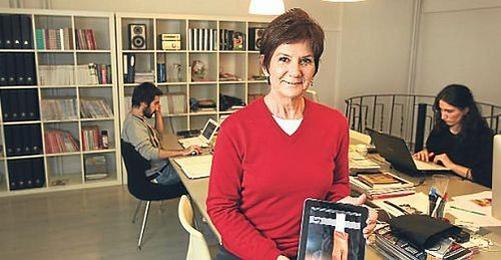Leading women journalists in Germany are campaigning for the introduction of a quota to allocate at least 30 percent of top level positions in the media to women. What is the situation in Turkey? Where are the women in the media?
Journalist Nurcan Akad became "Turkey's first women general publications director" when she was working for the daily Akşam newspaper in 2002. She said that women have their share in the Turkish media landscape. Yet, "women do not seek managerial positions; they do not endeavour to do so. There are certain reasons for that".
Number of female executive editors in Turkey: 1
Let's take a look at newspaper staff in general. Considering newspaper executives and editorial staff of nine randomly selected newspapers, 147 are male and 27 are female out of a total of 174 people. This boils down to a proportion of 15 percent.
Hürriyet: newsroom - 26 men/2 women. Advertising - 6 men/3 women.
Radikal: newsroom - 14 men/4 women. Advertising - 1man/3 women.
Sabah: newsroom - 27 men/4 women. Advertising - 7 men/1 women.
Habertürk: newsroom - 17 men/1 woman. Advertising - 3 men/ 2 women.
Zaman: newsroom - 27 men/2 women. Advertising - 11 men/ 0 women.
Evrensel: newsroom - 6 men/0 women.
Birgün: newsroom - 10 men/2 women. Advertising - 2 men/ 5 women.
Özgür Gündem: newsroom - 6 men/6 women.
Akşam: newsroom - 14 men/ 6 women.
The number of female general publications director is one. Female journalist Eren Keskin is the current executive editor of the Özgür Gündem newspaper.
Only at the newspapers Akşam and Sabah women fill the positions of publication directors.
There are a total of four female editors-in-chief.
The majority of the 15 percent proportion are regional representatives or in charge of the magazine section or the culture/arts supplement.
Management means power to men and responsibility to women
Journalist Nurcan Akad is currently working as head of ZETE, the first tablet newspaper of Turkey. In an interview with bianet, Akad indicated that the situation of the media in Turkey had two sides. "It does not only stem from the male-dominated organization. This is the primary and most important factor but on the other hand not many women aspire to become executives".
According to Akad, this lack of demand is the result of a different concept of power of men and women. While men associate power with the position as publications director, to women it means responsibility.
"Men for example take the seat of a publications director for its power and command. Women on the other hand, taking myself as an example, take the position as an increase of their responsibility".
"Filling a managerial position means much more to a man than to a woman. [For men], this is perceived as a symbol of power. They believe in this and therefore they are actually able to turn this status into power and evaluate it that way".
"The situation of media employees is deplorable"
Akad emphasized that women and men were not equal in executive positions:
"When you take a top position as a woman, you have to prove again and again that you deserve that authority - whereas for a man in the same situation it is enough to prove himself to certain people only when it is necessary".
"There is also an imbalance in wages", Akad noted. "A woman has to accept to earn less money than a man would earn in the same position".
Akad described the gender distribution of newspaper employees as "deplorable". The majority of women are working as department directors but the number of women working as editors-in-chief or publications directors is insignificantly low, Akad underlined.
"More equality in digital media"
Akad is convinced that digital media is the future of journalism. "I am not contemplating the written press i.e. the conventional media. Digital media is the future of journalism. The organization of digital media is very different, too", she explained.
"You need a smaller number of qualified staff. The hierarchic structure is limited because hierarchy slows work down. It does not matter whether the work is done by a man or a woman".
Akad said that there was more equality in the digital area due to its structure. In her opinion, the main stream print media will change its internal dynamics and become digital sooner or later as a requirement of the time.
"With the restructuring, they will learn to be more functional and substantial with less people", the journalist concluded. (IC/VK)


